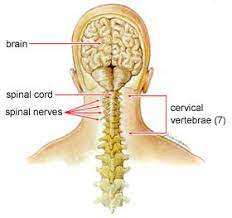

In our fast-paced digital world, tablets have become an integral part of daily life.
From catching up on news, browsing social media, to reading novels, we spend countless hours immersed in these devices.
However, despite the convenience tablets provide, their widespread usage raises significant concerns regarding the health of our cervical spine—the region of the spine situated in the neck.
In this detailed exploration, we shall focus specifically on how and why reading on a tablet influences cervical spine health.
This article by BestForwardHeadPostureFix sheds light on common postures adopted when using tablets, how these postures affect our spinal biomechanics, the strain on neck muscles, and long-term structural changes that may arise from prolonged tablet use.
In This Article:
- Understanding the Cervical Spine
- Common Postural Patterns During Tablet Reading
- Biomechanical Impact of Tablet Reading Postures
- Muscle Activity and Resulting Strain
- Influence on Cervical Spine Structure Over Time
- Long-term Health Implications of Tablet Use
- FAQs on How Tablet causes Nerd Neck
- Conclusion
Understanding the Cervical Spine
The cervical spine, consisting of seven vertebrae labeled C1 through C7, plays a pivotal role in supporting and stabilizing the head, which typically weighs about 10 to 12 pounds.
It facilitates crucial movements such as flexion, extension, lateral bending, and rotation, which enable us to navigate our environment comfortably and safely.
Beyond these mechanical functions, the cervical spine also serves a critical protective role by encasing and safeguarding the spinal cord and vital neural pathways connecting the brain to the rest of the body.
Ideally, the cervical spine demonstrates a gentle inward curvature known as cervical lordosis. This natural curvature serves an important biomechanical function by evenly distributing the weight of the head across vertebral structures.
By maintaining this curvature, the cervical spine minimizes excessive mechanical stress, effectively reducing muscular strain and preventing early degeneration of spinal discs and joints.
However, the cervical spine is exceptionally vulnerable to external stressors, particularly prolonged periods spent in unnatural or abnormal positions.
Activities that encourage sustained forward neck flexion, such as prolonged tablet reading or smartphone use, exert significant biomechanical stress.
These postures disrupt normal spinal alignment, increasing the gravitational load on cervical vertebrae and associated musculature.
Over time, repeated exposure to such abnormal postures can gradually erode cervical lordosis, causing structural changes and potentially leading to chronic pain, muscle imbalances, and degenerative conditions.
Therefore, a comprehensive understanding of the cervical spine’s anatomical structure and functional importance is essential.
Such knowledge provides valuable context for recognizing and mitigating the potential negative impacts associated with frequent tablet usage and similar activities.
Common Postural Patterns During Tablet Reading
When engaging with a tablet device, individuals usually assume one of several distinct postures, each varying in potential stress exerted on the cervical spine:
- Upright Sitting Posture:
Typically, users sit upright with the tablet resting on their lap or placed on a table. In this scenario, users tend to tilt their head forward, significantly increasing cervical spine flexion. - Semi-Reclined Sitting Posture:
Here, users lean slightly backward, holding the tablet around mid-chest height. This position generally involves moderate neck flexion, potentially offering a balance between comfort and strain. - Fully Reclined or Lying Posture:
Users recline entirely, holding the tablet above their face or chest level. This might reduce forward flexion of the neck but could still place stress on cervical segments due to gravity and arm positioning.
Each posture influences the biomechanics of our cervical spine uniquely, dictating how muscular effort and spinal alignment are affected during tablet reading.
Biomechanical Impact of Tablet Reading Postures
Biomechanics refers to how external forces impact bodily structures. When reading on a tablet, the primary biomechanical concern involves how posture affects spinal alignment and load distribution in the cervical region.
Research indicates that tilting the head forward significantly increases the load on cervical structures.
According to a study published by Mayo Clinic Health System, bending the head to about a 45-degree angle places considerable extra strain on the cervical spine, increasing susceptibility to discomfort commonly termed “tech neck.” (“Effect of Technology on Your Neck,” Mayo Clinic Health System).
The mechanism behind this increased stress is related to the biomechanics of leverage. In neutral alignment, the head weighs approximately 10-12 pounds, balanced evenly on the cervical spine.
As one tilts the head forward, gravitational forces multiply, causing effective weight loads to rise dramatically. This increased weight amplifies mechanical stress on vertebral discs, joints, and connective tissues of the neck.
Muscle Activity and Resulting Strain
The posture adopted while reading on a tablet directly influences muscle activity patterns in the neck region. Cervical spine posture largely dictates which muscles activate to stabilize the head and spine, determining muscular fatigue and potential strain.
For example, an upright sitting posture typically leads to significant cervical flexion, activating muscles at the back of the neck (cervical extensors) to counterbalance the forward shift in head position. The further forward the head leans, the harder these muscles work, accelerating fatigue and discomfort.
Semi-reclined postures may moderately decrease the load due to reduced gravitational pull; however, maintaining this posture still requires consistent muscular engagement to stabilize the head and neck. While initially comfortable, prolonged use can still lead to cumulative muscular strain.
When completely reclining, holding the tablet above the face decreases direct gravitational pull on cervical extensors, yet demands activation of shoulder, arm, and upper-back muscles, indirectly affecting cervical muscle function and contributing to strain through adjacent muscle groups.
Over time, repeated or prolonged muscle activation due to habitual tablet postures leads to muscle imbalance.
Certain muscles—such as the upper trapezius—may become chronically tense, while others, like the deep cervical flexors, weaken due to underuse. This imbalance further exacerbates the risk of musculoskeletal disorders and chronic pain.
Influence on Cervical Spine Structure Over Time
Long-term adoption of poor tablet-reading posture induces structural changes in the cervical spine. Persistent forward-head posture (FHP) is one significant structural alteration linked to tablet use.
FHP occurs when the head shifts forward of its optimal spinal alignment, increasing pressure on vertebrae and intervertebral discs.
Chronic cervical flexion and poor alignment gradually reshape the cervical curvature. The natural lordotic curve can diminish, leading to a flattened cervical spine and altered spinal biomechanics.
These structural changes heighten the vulnerability of cervical discs and joints to wear, inflammation, and degeneration.
Furthermore, the cervical spine depends heavily on appropriate muscular support for stability. Chronic poor posture due to tablet reading weakens supportive muscles, resulting in compromised structural stability.
Over months or years, this instability can significantly escalate into degenerative spinal conditions such as cervical spondylosis, disc herniation, or even osteoarthritis of cervical joints.
Long-term Health Implications of Tablet Use
The negative consequences of persistently abnormal cervical biomechanics caused by prolonged tablet viewing go far beyond occasional discomfort, significantly impacting overall health and wellbeing.
Extended periods spent reading on tablets, especially with the head consistently tilted forward, considerably increase the risk of developing chronic cervical spine conditions.
Over time, this habitual forward-flexed posture places excessive mechanical stress on cervical vertebrae and discs, predisposing users to painful conditions such as chronic myofascial pain syndrome, cervical radiculopathy (nerve root irritation causing radiating pain), and degenerative disc disease.
Chronic myofascial pain syndrome arises from ongoing muscular tension and spasms, primarily due to repetitive strain on neck muscles as they struggle to maintain the forward-tilted head position.
Similarly, cervical radiculopathy emerges when persistent poor posture leads to inflammation or compression of cervical nerve roots, causing symptoms like pain, numbness, and weakness in the arms or shoulders.
Furthermore, degenerative disc disease involves accelerated wear-and-tear of spinal discs due to prolonged misalignment and mechanical overload, resulting in decreased cervical mobility, persistent stiffness, and chronic pain.
According to research from Harvard Health Publishing titled “Protecting Your Neck from Tech,” prolonged use of technology devices like tablets strongly correlates with increased cervical spine disorders, underscoring significant public health concerns.
Beyond structural and muscular damage, excessive tablet viewing can exacerbate secondary health issues such as chronic tension headaches, impaired neck mobility, and persistent discomfort, severely affecting an individual’s quality of life.
As tablet usage continues to rise, these cervical spine conditions are likely to become more prevalent, leading to increased healthcare demands.
It is therefore essential to understand and acknowledge these biomechanical risks, as early recognition is key to effectively addressing and mitigating the serious, long-term impacts of tablet-induced cervical spine disorders.
FAQs on How Reading a Tablet causes Nerd Neck
Q-1: Why Does Reading On A Tablet Strain The Cervical Spine?
A-1: Most of us angle our chin down to see the screen, which increases neck flexion and shifts the head’s weight forward. That small tilt multiplies the effective load your neck has to carry—estimates suggest roughly 27 lb at 15°, ~40 lb at 30°, and ~60 lb at 60°. Over a chapter (or three), those forces fatigue muscles, irritate facet joints, and teach your body a forward-head habit that lingers after you put the tablet away.
Q-2: Does Tablet Tilt Or Screen Angle Really Matter?
A-2: Absolutely. A slight prop—think a folio case or stand set around a 20–30° tilt—lets you keep your eyes forward instead of down. Less downward gaze means less neck flexion and less muscle strain. There is also a time factor: discomfort rises when you read without breaks, so use short sessions and reset your posture every 15–20 minutes to keep your neck happy.
Q-3: Is Reclining With A Tablet Better For My Neck?
A-3: Not automatically. In many reclined and semi-reclined setups, the tablet sinks to lap level, which actually bends the lower neck more. If you prefer reclining, elevate the device on pillows or a lap desk so your gaze stays closer to eye level, keep your shoulders relaxed, and support your mid-back. The goal is the same as sitting: minimal chin-to-chest angle, neutral neck, easy breathing.
Q-4: What Do Recent Reports Say About Screen Time And Neck Pain?
A-4: The pattern is consistent: more prolonged, sedentary screen time—especially on handheld devices—correlates with higher rates of neck and shoulder discomfort. Tablets invite long, uninterrupted sessions, so symptoms creep up. The simplest countermeasures are frequent breaks, alternating positions, and raising screens toward eye level. Teens and heavy knowledge-workers tend to feel the effects fastest when sessions stretch past a few hours daily.
Q-5: What Are The Easiest Fixes For Tablet Reading?
A-5: Bring the screen up, and bring your chin back. Use a stand to lift the tablet near eye level, angle it slightly, and keep it about 45–70 cm from your eyes. Sit so your ears stack over your shoulders, elbows supported, and shoulders relaxed. Take micro-breaks every ~20 minutes (chin tucks, shoulder rolls), follow the 20-20-20 rule for eyes, and rotate among sitting, reclined-with-support, and standing lectern setups.
Conclusion
In conclusion, reading on tablets significantly influences cervical spine biomechanics through habitual adoption of suboptimal postures.
The common forward-leaning posture frequently adopted while reading tablets increases load and strain on the cervical spine, exacerbates muscle tension, creates imbalance, and gradually alters spinal alignment.
Long-term implications are profound, including potential structural degeneration, chronic pain, reduced mobility, and decreased quality of life.
To protect cervical spine health, understanding the biomechanical influence of tablet usage is essential, empowering individuals to proactively mitigate risks associated with modern technology.
References:

